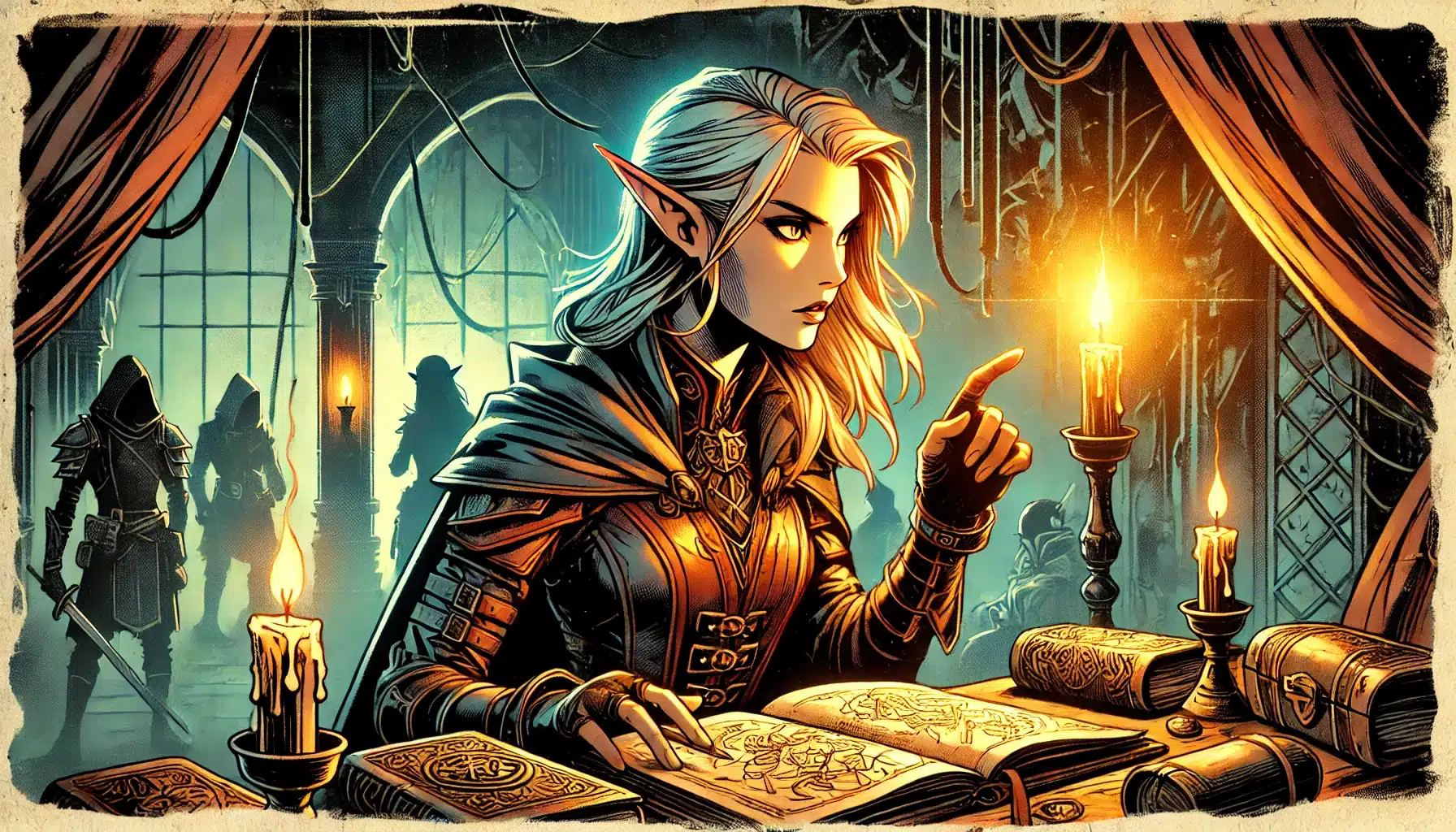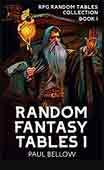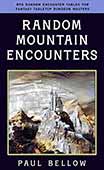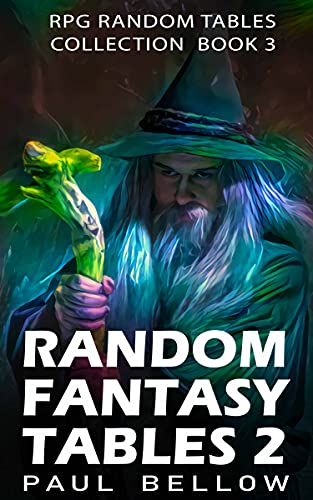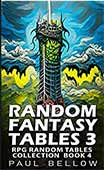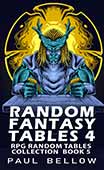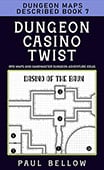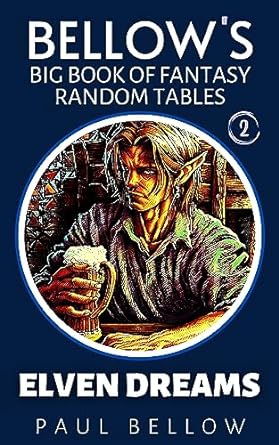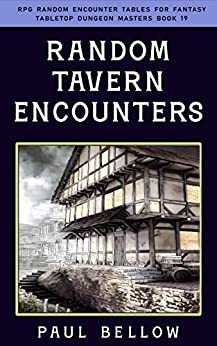Mysteries have always captured the human imagination. In Dungeons & Dragons, they offer a nuanced layer of storytelling that can elevate a campaign from the mundane to the truly epic. A mystery weaves together elements of suspense, curiosity, and the thrill of discovery, creating a tapestry where player engagement is magnified. When players have to piece together clues and theories, their connection to the story grows deeper, stimulating roleplay as they embody their characters’ quests for truth. Imagine characters whispering in dim taverns, examining arcane glyphs, or confronting dubious allies—all on the search for answers that promise to change everything.
Moreover, mysteries work wonders by fostering long-term intrigue. Unlike battles or treasure hunts, the open-ended nature of a mystery encourages players to think beyond the obvious, speculate on motives, and develop theories. It becomes more than a game; it’s a shared journey. Here’s the thing: when players face a conundrum that doesn’t resolve quickly, it holds their interest and invites them to explore creativity in strategy and interaction.
Besides, the balance between handing out clues and crafting believable red herrings is crucial. Giving too much leads to predictability, while too little can stifle progress and enthusiasm. A finely-tuned mystery must respect player agency—letting them steer their own course even as they navigate the twists and turn of the DM’s design. Subtle prompts and layered clues allow players to feel that they are truly detectives in a rich narrative world.
A dynamic mystery can catalyze the whole campaign, driving characters forward with the allure of something greater yet unseen. As game play unfolds, the DM’s art lies in sustaining this dance of revelation and false leads, ensuring players remain both challenged and captivated. So, whether it’s an ancient curse stirred anew or a trail of enigmatic notes leading to nowhere, a mystery brings an enchanting depth to D&D campaigns, promising that what lies beneath is as rewarding as any dungeon’s hoard.
The Core Elements of a Great D&D Mystery
The spine of any compelling mystery in a Dungeons & Dragons campaign is its structure: layered, intricate, and effortlessly drawing players deeper into its web. A mystery thrives on stakes—urgent and clear—that demand resolution. These stakes could be a looming catastrophe, a personal vendetta, or a moral dilemma, but they must resonate with the characters, propelling them into action against the ticking clock. In essence, the stakes are what transform a puzzle into a quest of epic proportions.
Layered clues step in as the connective tissue. They should be multifaceted, requiring players to piece them together over the story’s course. Clues aren’t just tidbits of information; they are narrative breadcrumbs, scattered through events, locations, and interactions. Importantly, they should have multiple paths to discovery, allowing varied approaches for players depending on their skills and choices. This multiplicity ensures that players never feel railroaded and encourages active engagement as they pursue different investigation threads.
Try my AI Tabletop RPG generators...and an extensive library of content!
But let’s not forget that every mystery needs red herrings, which serve to embellish the tapestry of the story. These misleading elements should challenge players to distinguish between fact and fiction, sharpening their detective skills. A well-placed red herring adds depth to plot twists, ensuring that triumph feels earned when the truth is finally brought to light.
Key Elements of an Effective D&D Mystery
- An engaging hook to captivate immediately
- Clear stakes motivating investigation
- Layered clues woven through the narrative
- Multiple discovery paths enhancing player choice
- Compelling suspects with conflicting motives
- Environmental storytelling enriching the world
- Natural consequence for failure, raising tension
- Red herrings to mislead and intrigue
- Escalating events raising urgency and investment
- An underlying theme connecting players to the plot
- Clarity about what success looks like
- Tension built into interpersonal dynamics
- Connections to characters’ backstories for depth
- A climactic resolution providing satisfying closure
- Opportunities for character growth and development
- Non-playable characters’ (NPCs) secrets enriching plot
- Use of technology or magic as plot devices
- A mixture of pure logic and emotional investment
What’s truly enthralling about D&D mysteries is their potential for player agency. A great mystery is less about the DM painting by numbers and more about sketching a world where players can color outside the lines. This fluidity allows DMs to react to player choices and shape the narrative dynamically, ensuring the journey is as unforgettable as the resolution.
Ultimately, a mystery’s success hinges on its ability to keep players guessing, theorizing, and yearning for more. When crafted with care, a mystery transcends gameplay—a narrative phenomenon that resonates with the elemental human hunger for stories woven with intrigue and movement.
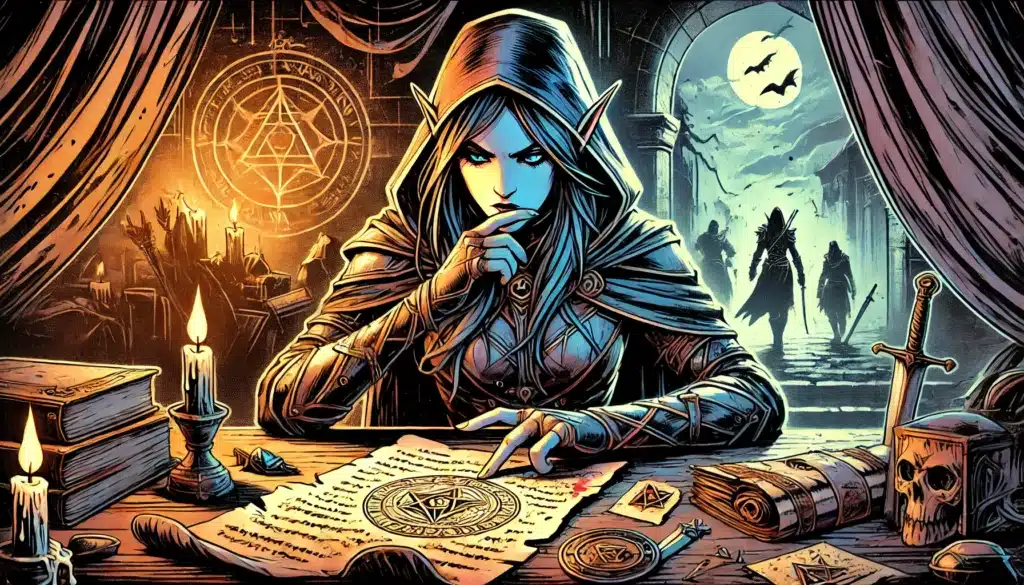
Structuring Your Mystery for Maximum Impact
Building a mystery that unfolds naturally through player choices requires a delicate balance of design and improvisation. The key is to create a story framework that supports freeform exploration without losing momentum. Different structures cater to various styles, but the essence of a successful mystery is its ability to adapt to the unpredictable ebb and flow of player decisions. There’s an artistry in ensuring that clues emerge organically, mirrored in the world rather than merely dispensed by the Dungeon Master’s hand.
⚔️ Fantasy RPG Random Tables Books
Make life as a Gamemaster easier…
If you play Dungeons & Dragons, Pathfinder, or other fantasy RPGs, this
RPG random tables series
is packed with encounters, NPCs, treasure, and more. Available in eBook or print—either way, you’ll have a wealth of adventure ideas at your fingertips.
An effective way to achieve this is by allowing clues and evidence to scatter throughout the environment, rather than feeding players a linear narrative. Whether it’s in discovering a bloodstained dagger under a town’s haystack or overhearing whispered arguments in the emperor’s court, the game world should teem with potential insights that players can stumble upon and transform into significant breakthroughs. This organic scattering of information allows players to feel like authentic investigators weeding through disorderly facts and fiction.
The Web of Clues Approach
The Web of Clues Approach encourages a non-linear investigation, where players can interpret and connect pieces of the puzzle as they see fit. By placing redundant clues, the campaign ensures that setbacks or overlooked details don’t grind the investigation to a halt. It’s about giving the players enough threads to pull on that the story eventually unravels itself without too much frustration or handholding.
| Type of Clue | Uses | Ways to Deliver Organically |
|---|---|---|
| Physical evidence | Provides hard facts or critical information | Found in crime scenes, personal belongings, or artifacts |
| Witness testimony | Offers subjective insights, opens new investigation angles | Gained through conversation or interrogation |
| Supernatural visions | Adds intrigue and unpredictability, connecting with magic or lore | Triggered by locations, artifacts, or spells |
| Written records | Contains concealed information or historical context | Located in libraries, journals, or secret compartments |
| Rumors | Sparks curiosity and directs focus | Heard in public places, taverns, or through messages |
| Dreams | Offers symbolic or cryptic messages | Experienced by party members during rest |
| Historical artifacts | Introduces backstory connection or key historical facts | Uncovered in ruins, museums, or collections |
| NPC interactions | Reveals motives, alibis, or suspicions | Through social encounters or espionage |
| Secret compartments | Hides essential clues or evidence | Found in buildings or furniture |
| Environmental details | Indicates something is amiss or provides narrative context | Visible changes in the setting or unexpected phenomena |
| Magical anomalies | Points to mystical influence or hidden threats | Noted in areas of arcane activity |
By designing a campaign that allows for these clues to appear in various guises, you tap into the inherent unpredictability of player dynamics. This leads to a rich tapestry of narrative potential, where every decision can ripple across the mystery, creating an engaging and satisfying experience.
The edges of a good mystery should feel crisp yet malleable, giving way to spontaneous player-driven narratives. Through redundancy and multiplicity, players can approach problems from angles that suit their characters and play styles, leading to a more immersive and personalized storytelling experience. Let the players twist the threads of your carefully woven web, responding not just to what they know, but what they seek to discover. The thrill lies in guiding them through the mystery’s maze without ever revealing the map.
The Mystery Funnel: From Small Clues to Big Reveals
Pacing a mystery is an artform unto itself: begin with subtle hints, gradually expanding into larger revelations until the climactic payoff. This approach, akin to a funnel, helps maintain intrigue and engagement as each clue uncovered adds gravity to the upcoming epiphany. It’s not just about the information, but how and when it’s unveiled that keeps the players hooked. Here, the incremental build-up is crucial, offering rewarding insights that escalate in significance until the players set the full picture into view. Here’s how it unfolds:
- Start with an unexplained event to draw players in.
- Introduce ambiguity through contradictory evidence.
- Escalate discovery urgency with growing damages or threats.
- Use NPC guidance to subtly direct player focus.
- Dole out incremental clues that interleave with previous discoveries.
- Naturally set obstacles to heighten tension and investment.
- Weave in character backstories to fuel personal stakes.
- Lay red herrings in tandem with genuine leads for complexity.
- Create at least two seemingly unrelated threads that connect midway.
- Gradually reveal the mystery’s scale through environmental changes.
- Escalate urgency through perceptions of time running out.
- Reveal key lore pieces at impactful story moments.
- Encourage player theories during in-game downtime.
- Allow initial clues to misdirect while hidden layers unfold.
- Present multiple theories, some plausible, some misleading.
- Space revelations across sessions to maintain anticipation.
- Establish thematic consistency in how clues are introduced.
- Confront players with critical choices impacting the mystery’s results.
- Attach revelations to dramatic moments to reinforce emotional stakes.
- Allow players to discover personal consequences for their choices.
- Complement revelations with moral or ethical dilemmas.
A funnel shapes the flow of information such that each step is a precursor to a more comprehensive insight, keeping narratives alive and vibrant. In a game that thrives on creativity and collaboration, this method reinforces the invaluable role players hold in breathing life into the sequence.
Maintaining balance in this progression demands intuition about when to guide and when to let things unfold organically. The momentum of discovery should feel like a collaborative dance, where players lead with their choices and the DM responds with narrative beats that intrigue them further. The best funnels don’t just direct; they entice. They invite players to anticipate, question, and delve deeper until they finally pull back the curtains, glimpsing the truth behind it all.
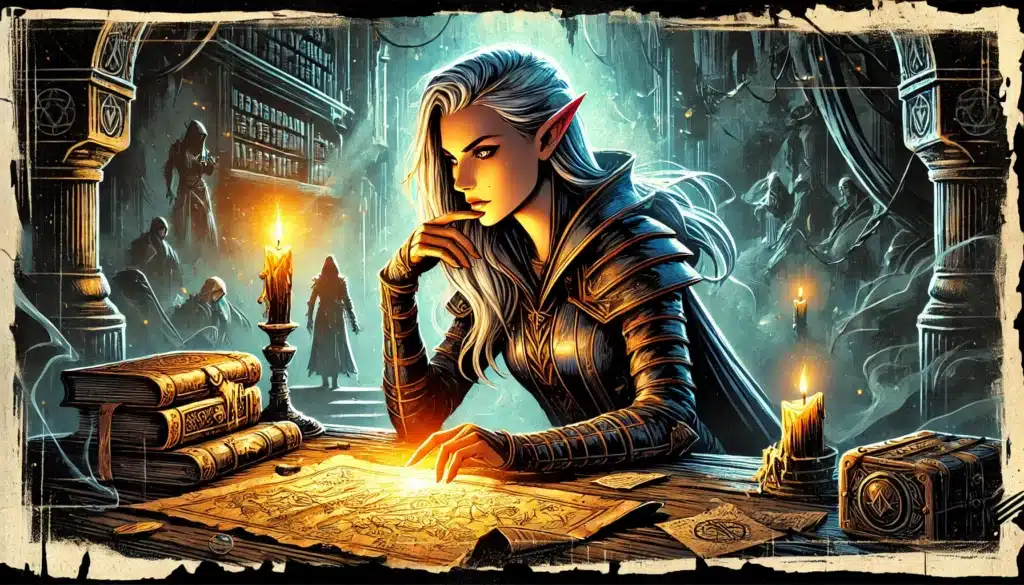
Epic Mystery Story Ideas for Your D&D Campaign
To help you create rich, mystery-driven campaigns, consider these unique story concepts that can challenge your players and enrich their adventuring experience. Each narrative concept brims with potential, beckoning players to unravel its secrets in a world where not everything is as it seems. With diverse settings and intriguing goals, these stories are designed to push the boundaries of imagination while facilitating deeply immersive gameplay.
The Vanishing City
Imagine an entire city—bustling markets, lively squares, and all—disappearing overnight, leaving only an empty crater to tell the tale. The sudden absence of life is as chilling as it is perplexing, presenting players with one of the greatest enigmas they’ve ever faced. The city’s inhabitants, structures, and soul have vanished without trace, and the players are tasked with unraveling the mystery of this mass disappearance. Was it the work of malevolent magic, a god’s unfathomable whim, or perhaps, an unintended planar shift?
The investigation might lead players through denizens’ rediscovered journals, hidden artifacts with bizarre properties, and spectral glimpses of the city that once was. Each clue brings them closer to understanding the forces behind the event, while competing factions either hinder or help, driven by their own interests and secrets. As players venture further, they’ll encounter false leads related to mythical prophecies or dismissed local legends.
| Possible Reasons for Disappearance | Factions Involved | Red Herrings |
|---|---|---|
| Planar shift | Order of the Crystal Mask | Celestial alignments not properly understood |
| Divine intervention | The Guild of Arcane Innovators | Local superstition surrounding a cursed relic |
| Arcane experiment gone awry | Cults devoted to disappeared deities | Reports of haunting mist on city’s outskirts |
| Magical artifact malfunction | Kingdom’s military seeking lost technology | Sudden eruptions of wild magic in nearby towns |
| Temporal anomaly | Shadow syndicates capitalizing on chaos | Mistaken testimony from surviving travelers |
| Elemental encroachment | Alchemist enclave pursuing forbidden lore | Strange wildlife activity post-event |
| Interdimensional breach | Druid circles affected by eco-displacement | Unusually accurate prophecies from an oracle |
| God’s test | Old rival nations probing for power vacuums | Ethereal echoes mistaken for survivors’ cries |
| Cursed to another realm | Residue brigades masking underlying plots | Unusual plant growth camouflaging relic sites |
| Natural event mistakenly blamed | Archmage alliances researching outcomes | Misinterpreted relic unearthed at event site |
| Alliance deception | Guilds preserving secretive agendas | False messages from vanished leaders |
| Powerful entity’s transport | Mercantile leaders rebuilding influence | Conflict-fueled rumors about other towns’ envy |
As players follow this twisted path, they eventually uncover the truth, drawing back the veil on realities they never dreamed existed. This isn’t just a rescue mission—it’s a dive into the fabric of realms, promising revelations that shake their very understanding of power and perception.
⚔️ Fantasy RPG Random Tables Books
Make life as a Gamemaster easier…
If you play Dungeons & Dragons, Pathfinder, or other fantasy RPGs, this
RPG random tables series
is packed with encounters, NPCs, treasure, and more. Available in eBook or print—either way, you’ll have a wealth of adventure ideas at your fingertips.
The adventure doesn’t end with truth but asks whether the city can—or should—be brought back, and at what cost. In exploring these moral complexities, the players can find growth not just in their characters, but in themselves, making this mystery unforgettable.

The Immortal Who Was Murdered
The legend of immortality is shattered when a noble, villain, or even lesser deity—believed to be unkillable—meets their end. The enigmatic circumstances surrounding this impossible murder beckon players into an abyss of conspiracy and shadow. Was such a life stolen by a weapon capable of killing gods, or perhaps a hidden twin impersonated them in the first place? Or could this be a grandiose ruse, with the supposedly murdered figure faking their death for reasons known only to themselves?
As the game unfolds, the players walk through the shadows of court politics, scour forbidden tomes, and engage with prophets and charlatans alike to uncover truth. Vital to this journey is a tapestry of rivalries and alliances, falsehoods that smother the light of day, and whispers of power that could change destinies.
- The god-killing weapon exists, with its own tragic origins.
- A false death orchestrated by the immortal to escape obligations.
- A secretive order seeks to expose fakes among ‘immortals.’
- Hidden twin has lived a clandestine life, now seizing opportunities.
- Misdirection by another deity plotting against the considered immortal.
- Prophecy dictating their fall as a matter of cosmic balance.
- A pact broken with dark forces triggering unintended consequences.
- Political faction using illusions to create chaos.
- The murder, a ploy to shift attention from greater schemes.
- Witnesses enchanted to be unreliable or unknowingly false.
- The immortal imprisoned, with doppelganger replacing them.
- Historical vendetta leading to a meticulously planned assassination.
- Elixir-neutralizing immortality properties covertly introduced.
- A cascading event from tampered timeline repercussions.
- Nature spirits seeking revenge for ancient transgressions.
- Divine punishment arising from secret transgressions.
- Illusion magic masking the truth about their ongoing life.
Imagine players standing at the precipice of true discovery, their hearts thundering with the weight of implications they had yet to consider. The immortal, whether deity or deceiver, reshapes their understanding of what’s possible. Their pursuit of clarity through personal biases and moral dilemmas defines what this mystery truly represents—an exploration of belief in power, and the courage to confront stark, inscrutable truth.
In resolving this, the players might shift entire power structures or ignite new myths, forever altering the world’s perception and potentially re-defining what immortality itself means.

The Whispering Curse
In a quaint town, unsettling whispers infiltrate the minds of its citizens. Some succumb to madness, others walk towards their deaths, while a rare few claim enlightenment beyond human comprehension. These elusive whispers, laden with supernatural terror, portend disaster and challenge the players to untangle the curse’s lineage. The history of these whispers is as foggy as their purpose—a puzzle wrapped in enigma, demanding careful unraveling.
The whispers pull at threads of supernatural horror or provoke exploration into ancient curses, driving players toward forgotten secrets and unveiling arcane rituals best left undisturbed. As they forge pathways through this auditory nightmare, they discover layers of human weakness and strength previously unexplored.
| Possible Sources of Whispers | Influence on Mystery |
|---|---|
| Ghostly presences | Lead investigations to haunted pasts |
| Eldritch beings | Open paths to cosmic horror realms |
| Time loops | Repeat events, providing insight upon replaying them |
| Cursed artifacts | Suggests the items themselves as central to events |
| Planar echoes | Introduce breaches between reality and illusion |
| Forgotten deities’ vengeance | Link to ancient grudges rooted in the local culture |
| Sentient magic | Magic seeking liberation, using people as a medium |
| Arcane rituals gone wrong | Responsible for accidentally awakening an unknown force |
| Underworld breaches | Suggest hellish pokes into the natural world |
| Nature’s revolt | Revelations about a natural order redrawn |
| Collective subconscious | Highlight themes of shared guilt or unsaid truths |
| Demonic temptations | Bestow players with moral choices tethered to whispers |
| Celestial trials | Test virtue through perception of these whispered tales |
| Unacknowledged trauma | Unravel core memories linked to whispers’ existence |
In this setting, players navigate a complex psychological landscape that not only bears down and burdens but fosters an environment teeming with internal as well as external conflict. How they react to these whispers—whether to embrace, eradicate, or coexist—determines the fate of the entire town, and potentially their own sanity.
Try my AI Tabletop RPG generators...and an extensive library of content!
Through conversations with affected citizens or deciphering ancient texts, the mystery could reveal a deep-seated tragedy, a story of longing, betrayal, or misunderstood truths whispered through time. Let their discoveries whisper back, offering insights into their own hearts as they forge ahead to silence—or embrace—the enigmatic curse.
The Masked Warlock’s Pact
The tale of a masked figure who appears across realms, offering ephemeral power to those in despair, is both enticing and dread-laden. Those who succumb to the allure soon find themselves lifeless, their faces removed as though never existing. This mystery opens with the chilling question: who or what is behind these grotesque transactions, and what drives the force behind the mask?
Journey through murky dealings where desperate wish-seekers confront terrifying cost for their desires, and follow the trails of the faceless—from a dimension that defies understanding, seeking the truth behind this masked warlock’s machinations. The answer may lie within forgotten tomes, cursed items, or the heart of a conspiracy stretching across planes.
- The warlock is an avatar of an unknown god, fulfilling unsen decrees.
- Victim of own sorcery, trapped in an infinity loop of identity theft.
- A front for an empire manipulating the desperate to bolster their power.
- Promises made in desperation connect to greater cosmic laws.
- Twisted art of vengeance by those they once wronged.
- Warlock’s mask harbors a curse, elongated through time.
- The creature seeking redemption for past misdeeds through forced aid.
- Power requires sacrifice in the cruelest laws of dark magic.
- The warlock’s essence split between each faceless entity.
- Mirror dimension binding the mask with selective memories retained.
- Faces collected are keys to untold forbidden knowledge.
- The masked being orchestrated by entities who remain unseen.
- Warlock, a creation of oppositional magical schools battling for dominance.
- Desperate written alliances with powers of other realms.
- Souls of the faceless find ageless peace in other astral planes.
- Vision of parallel lives through lens of a faceless form.
- The true mask finds its origin in the twisted reflections of the collective.
The story spirals into a struggle against moral quandaries—when power comes at such damning costs, what remains right? The truth may not offer solace but instead reveal purposes beyond heroism, entwining adventurers in webs of deceit, persuasion, and ultimate revelation.
The threads of the masked entity’s influence weave through places and people alike, each deduction wrapping the players further into its charm and conspiracy. In resolving the mystery, players confront not just the warlock but the specter of their choices converging with what it means to wear—or lift—the mask of destiny.
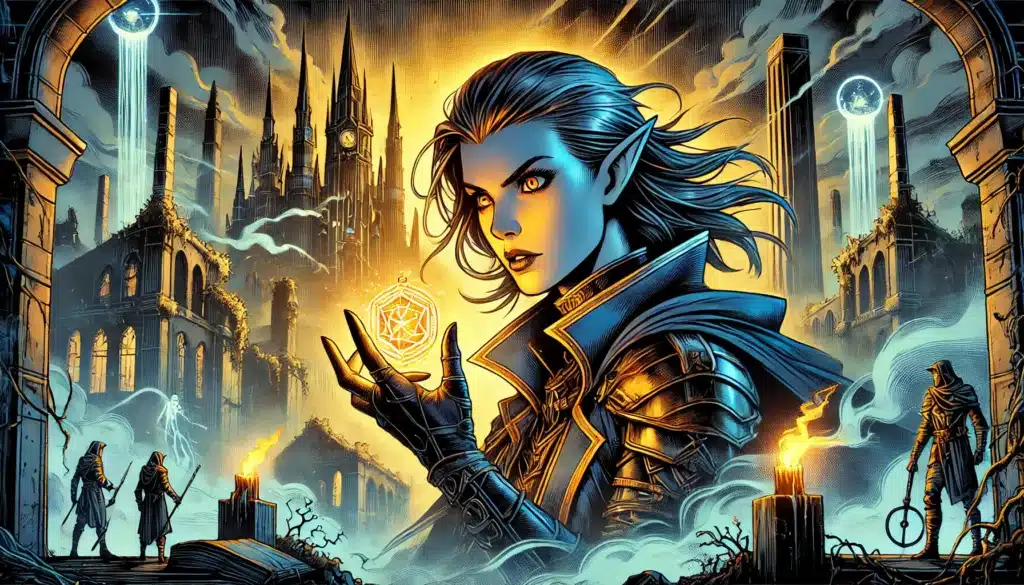
Running a Mystery Without Frustrating Your Players
In the realm of mystery campaigns, the fine balance between challenge and frustration is paramount. Players thrive on the excitement of uncovering secrets, but double-edged is the sting of stagnation if they encounter an overwhelming labyrinth of complexity or ambiguity. The key is maintaining clarity and openness to player ingenuity while allowing the mystery to remain compelling.
Several approaches can support this balance, starting with fostering an atmosphere where players feel encouraged to think creatively rather than be beholden to dice rolls alone. When players approach a plateau, NPCs can organically provide hints, subtly steering without overtly paving the way. The game should be a canvas for exploration where ideas flow freely, rather than a meticulous script demanding précis execution.
- Establish NPCs who offer insight naturally, not overtly.
- Reward intuitive leaps with story-rich opportunities.
- Use environmental decor as supplemental informants.
- Encourage lateral thinking through different gameplay perspectives.
- Allow multiple paths to lead to the same or similar conclusions.
- Immerse developments organically through narrative detail.
- Redirect when momentum flags without losing narrative strides.
- Provide escalating yet focused choices at critical junctures.
- Facilitate role-reversal or unique mechanics that evoke new viewpoints.
- Maintain open-ended questions as new avenues for exploration.
- Ensure backtracking builds narrative rather than repetitive steps.
- Have clues bridge gaps to avoid feeling of repetitious tasking.
- Reward risk-taking with unexpected, delightful discovery.
- Integrate character backstories as access points to breakthrough moments.
- Use narrative consequences productively to bring resolution.
- Enlist subtle meta-narrative mentions to add direction.
- Alternate time-specific revelations to recalibrate player expectations.
By fostering techniques that pivot gameplay from rigidity, the game can flourish as a dynamic storytelling forum where players’ agency impacts the unfolding mystery. There lies beauty in openness—accept that mystery can shift, resolving unpredictably without diminishing its intrinsic allure.
Ultimately, the heart of a mystery pulses in the journey, not the destination. It allows for a space where players discover, grow, and unravel stories crafted by more than just their collective imaginations but by their will to seek answers—an adventure where each attempt to untangle can change the narrative’s heartbeat and, interestingly, their own.
Final Thoughts on Creating Epic D&D Mysteries
In weaving epic mysteries for your D&D campaigns, the narrative becomes a rich tapestry of intrigue and personal discovery. Mysteries are more than puzzles; they are conduits for immersive storytelling, inviting players to delve into worlds where every decision ripples into the broader narrative. While the answer is pivotal, it’s the journey that breathes life into these fabled escapades. Venturing into the unknown with curiosity as their compass, players find not just resolution but themselves.
Balance is a DM’s greatest ally in cultivating an engaging mystery. While planning is essential, improvisation sings when players forge unexpected paths, challenging the DM to continuously adapt. Always remember: players’ curiosity should be the lighthouse guiding the campaign’s ship through foggy uncertainties and undiscovered lands. They are the architects of adventure, every choice a brushstroke on your canvas.
Experimentation with different structures keeps the narratives dynamic and gives them a life where repetition is the only true enemy. The lure of the chase relies on tantalizing uncertainty, combining elements of the unexpected with familiar thematic echoes. Intertwining player decisions with narrative consequences ensures each session contributes to a tapestry of individual dreams and collective storytelling.
Let mysteries become more than games of deduction by edging into territories that expand your storytelling horizons. Push beyond what is expected, curating surprises that tie deeply with characters’ arcs, resonating with stories left untold. Each DM has their unique signature, so never shy from bringing deeply personal motifs, ideas, or improvisational artistry into your tales. In weaving these unexpected elements into your narrative, consider how to create DND backstory that not only enriches the main plot but also ties the fates of your characters to the mysteries and surprises you introduce. Each twist should serve to deepen the players’ investment in their roles, transforming seemingly ordinary encounters into pivotal moments that reflect their growth. Ultimately, the blend of personal flair and intricate storytelling can elevate the entire gaming experience, leaving an indelible mark on the journey you all share.
In closing, remember the essence of D&D mysteries: they are journeys. Journeys that propel heroes and misfits alike into the treacherous terrain of forgotten lore, unexplored secrets, and revelations that change perceptions. These are the stories that echo through time—because the solved mystery is but a moment; yet, the quest for it, is everything.

